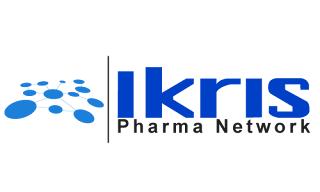Veenat capsules are anti-cancer drug which is given to the patients to treat the gastrointestinal tumors and leukaemia.
Brand Name: Veenat
Active Ingredients: Imatinib Mesylate
Strength: 100mg / 400mg.
Dosage Form: Capsules / Tablets.
Retail Pack: 30’s Bottle, 120's Bottle, 10's Blister Strip.
Manufactured By: NATCO PHARMA LTD.
Veenat is a generic formulation of imatinib 400 mg Mesylate. This is one of the 1st generic form of Imatinib Mesylate which was introduced in the world. Veenat is manufactured by Natco Pharma. Imatinib is used in treating CML (Leukemia) and gastrointestinal stromal tumors (GIST). Imatinib (Veenat) is also considered as targeted therapy.
There are many countries where Imatinib is not available or approved. Patients from those countries can import medicine on named patient bases. They have to take import permission from their Government before importing the product. They have to provide their prescription and id proof before importing the product. It is always better to check the credential of the exporter before importing the product.
There is another way for the patient to get access to generic medicines from India. Patients can travel to India for consultation with a qualified Doctor and based on the prescription, they can buy 3-6 months of therapy. Patients need to know the legal requirement of their domicile countries before taking medicine along with them. It is advisable not to buy and medicine which contains narcotic substance.
A generic medicine is a broad term. There might be many generic products available for one molecule. The patient/buyer should check the Credibility of the manufacturer before buying the product.
Where can I Buy Veenat 400 mg in India?
Patients from all over the world can buy generic imatinib mesylate 400 mg (Veenat) from Pharmacy shops in India. Patients need to consult Hematologist / Oncologists before starting treatment.
Can we buy Veenat 400 mg online?
Veenat 400 mg (Imatinib mesylate 400mg Tablet ) is a prescription medicine. The patent should start treatment with Imatinib Mesylate after consultation with treating Physician
Chronic Myeloid Leukaemia (CML) is a cancer that develops when the blood forming cells of the bone marrow (the soft, spongy tissue in the center of bones) starts producing too many WBC (white blood cells), including immature ones. Managing patients with the CML in chronic phase has changed dramatically with the advent of the imatinib. The use of the Abl tyrosine kinase (TK) inhibitor, imatinib mesylate 400 mg (IM), for the treatment of patients with the chronic myeloid leukaemia (CML) in chronic phase appears to be well tolerated and effective
FAQ
How long can you live with chronic myeloid leukemia?
Is CML leukemia is fatal?
Is chronic myeloid leukemia curable?
Is CML considered cancer?
There are many countries where Imatinib is not available or approved. Patients from those countries can import medicine on named patient bases. They have to take import permission from their Government before importing the product. They have to provide their prescription and id proof before importing the product. It is always better to check the credential of the exporter before importing the product.
There is another way for the patient to get access to generic medicines from India. Patients can travel to India for consultation with a qualified Doctor and based on the prescription, they can buy 3-6 months of therapy. Patients need to know the legal requirement of their domicile countries before taking medicine along with them. It is advisable not to buy and medicine which contains narcotic substance.
Where can I Buy Veenat 400 mg in India?
Patients from all over the world can buy generic imatinib mesylate 400 mg (Veenat) from Pharmacy shops in India. Patients need to consult Hematologist / Oncologists before starting treatment.
Can we buy Veenat 400 mg online?
Veenat 400 mg (Imatinib mesylate 400mg Tablet ) is a prescription medicine. The patent should start treatment with Imatinib Mesylate after consultation with treating Physician
Chronic Myeloid Leukaemia (CML) is a cancer that develops when the blood forming cells of the bone marrow (the soft, spongy tissue in the center of bones) starts producing too many WBC (white blood cells), including immature ones. Managing patients with the CML in chronic phase has changed dramatically with the advent of the imatinib. The use of the Abl tyrosine kinase (TK) inhibitor, imatinib mesylate 400 mg (IM), for the treatment of patients with the chronic myeloid leukaemia (CML) in chronic phase appears to be well tolerated and effective
FAQ
How long can you live with chronic myeloid leukemia?
Is CML leukemia is fatal?
Is chronic myeloid leukemia curable?
Is CML considered cancer?
Worldwide Shipping Available At Iraq, Iran, Saudi Arabia, Jordan, Mexico, Argentina, Brazil, Chile, Colombia, Peru, Venezuela, Romania, Switzerland, Georgia, Turkey, Italy, UK, Ukraine, Azerbaijan, Latvia, Poland, Slovakia, Armenia, Kazakhstan, Moldova, Tajikistan, Turkmenistan, Uzbekistan,Mongolia, Algeria, Mauritius, Uganda, Zimbabwe. Australia and New Zealand. China, Cambodia,Indonesia, Malaysia, the Philippines, Singapore, Thailand, Vietnam, Hong Kong.










